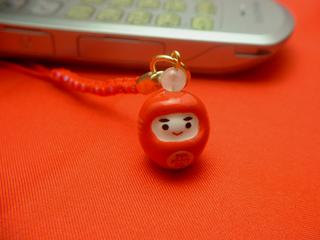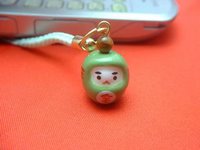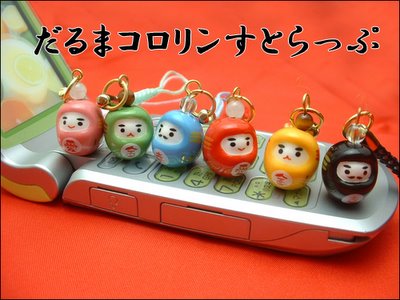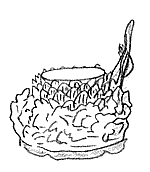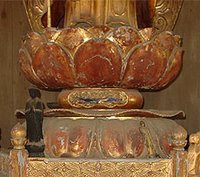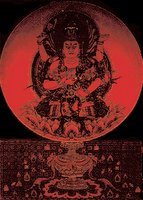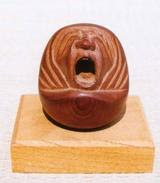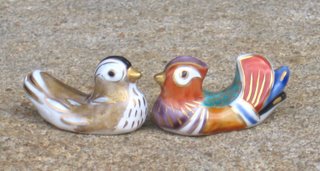. tako 凧 Kites of Japan - Introduction .
:::::::::::::::::::::::::::::::::::::::::::::::::::::::::::::::::::::::::::::::::::::::::::::::::::::
Kite 凧 tako
wadako 和凧 Japanese Kite

Flying a kite is a popular event during the three days of New Year Holidays. There are also contests of Kite flying in Hamamatsu and other cities. Some kites are so big it takes a whole group of grown up men to hold them. The patterns of Japanese Kites are sometimes very beautiful, heroes of legends and folktales are most spectacular. To find out about them is like an excursion in the stormy field of Japanese Samurai Heroes. But the diligent Daruma san has also won his place in this genre.
. tako 凧 Kites of Japan .
- - - - - tako-e 凧絵 pictures on kites
. Edodako, Edo-dako 江戸凧 Kites of Edo .
. Kanagawa 神奈川 three kites .
. Kyushu 九州 kites from Kyushu .
. toojindako, toojin tako 唐人凧 kite with Chinese face .
.......................................................................
History of Kites in Japan
Kite Museums in Japan - 凧(たこ)博物館
Japan Kite Association "日本凧の会"
Kites with six corners 六角凧 rokkaku tako
Goods with Daruma kite patterns,
like nektie pins and others
http://www.shokoren-toyama.or.jp/~daimon/tokusan/goods.html
:::::::::::::::::::::::::::::::::::::::::::::::::::::::::::::::::::::::::::::::::::::::::::::::::::::
Make a wish with “Kite-Flying”
and fly it high in the sky
January 2015

- source : tadaima Japan
:::::::::::::::::::::::::::::::::::::::::::::::::::::::::::::::::::::::::::::::::::::::::::::::::::::
The Kite Museum in Ikasaki, Shikoku
Kites from Japan and all over the World
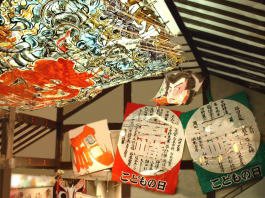
凧博物館では、日本各地の凧はもちろん、世界中から収集した凧の展示を中心に、凧に関する幅広い資料の充実を図っています。
伝統ある各地の凧を展示、紹介するとともに、創意工夫をこらした新しい凧も展示して、凧とのふれあいを深めたいと考えています。
五十崎凧資料館
〒795-0301 愛媛県喜多郡内子町五十崎甲1437番地
TEL 0893-44-5200 FAX 0893-44-5202
http://www.shikoku.ne.jp/bigkite/takohaku.html
MAP of the Area
List of Kites from Japan / 日本各地の凧
Click on the buttons to see the various kites.
:::::::::::::::::::::::::::::::::::::::::::::::::::::::::::::::::::::::::::::::::::::::::::::::::::::
Daruma from Hatano - Hadano 秦野だるま
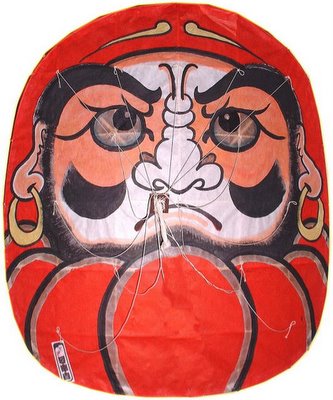
Daruma as protector of the silk cocoons.
だるまは形が繭に似ているところから、養蚕の神とされてきました。
その他にも七転び八起きの商売繁盛、赤い衣は子どもの厄除け、農家にとっては豊年万作の福のなどなど、縁起物として大切にされています。
その昔、武家に子どもが生まれると、出生を祝って角凧をあげていました。
それを遠くで眺めていた農家の子供たちが凧を羨ましがり、せがまれて親が作ったのがだるま凧だったと言われています。目玉や胴の模様に蝋を溶かして筆で塗るとあげたときに逆光になり、その部分がランランと輝いて見えます。
. Kites from Kanagawa 神奈川の凧 .
abudako, abu tako あぶ凧 / 虻凧 kite like a gadfly
semidako, semi tako 蝉凧 cicada kite
shoogidako, shoogi tako 将棋凧 Japanese Shogi chess kite
:::::::::::::::::::::::::::::::::::::::::::::::::::::::::::::::::::::::::::::::::::::::::::::::::::::
Daruma from Etchuu 越中だるま凧
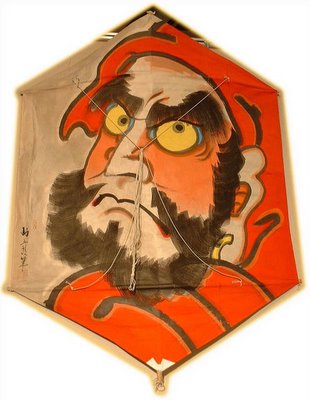
六角凧で有名な三条市の凧にだるまを描いたものです。だるまは力強い筆致で描かれることが多く、この凧も線の太い力強いだるまの絵柄となっています。骨組みも太く、強風用の凧となっています。
A kite with six corners.
. Etchu Daimon Kite Festival 越中大門凧祭り
with more Daruma kites !
. Folk Toys from Toyama (Etchu) .
:::::::::::::::::::::::::::::::::::::::::::::::::::::::::::::::::::::::::::::::::::::::::::::::::::::

A long single tail is needed to fly this kite.
The birth of this kite is Hatano city, Kanagawa prefecture.
http://www.asahi-net.or.jp/~ET3M-TKKW/daruma.html
:::::::::::::::::::::::::::::::::::::::::::::::::::::::::::::::::::::::::::::::::::::::::::::::::::::
Big Kite from Tsugaru 津軽大凧
About 115 cm long and 90 cm wide.


Photos from Ishino san.
:::::::::::::::::::::::::::::::::::::::::::::::::::::::::::::::::::::::::::::::::::::::::::::::::::::
Sakurai no tako 桜井の凧 kites from Sakurai
common forms are fukusuke, horsefly, bee, butterfly and Tenjin sama.
They are known for their bright colors. They are "sodedako" 袖凧 kites with sleeves.

. Aichi Folk Art - 愛知県 .
:::::::::::::::::::::::::::::::::::::::::::::::::::::::::::::::::::::::::::::::::::::::::::::::::::::
Kurayoshi no Ika 倉吉いか
In the town of Kurayoshi, Tottori, the kites are not called TAKO (Octopus), but IKA (Squid).
. . . CLICK here for Photos !
..........................................................................

. ikanobori いかのぼり - 凧 -紙鳶 kite like a squid .
speciality of Hakodate, Hokkaido
凧巾きのふの空のありどころ
几巾(いかのぼり)きのふの空のありどころ
ikanobori kinoo no sora no aridokoro
this "squid" kite
in the same place
as in yesterday's sky
Tr. Gabi Greve
a kite flying
in the same place
as in yesterday's sky
Tr. and following comment : Chris Drake
A child or child with parent is out flying a large kite in the spring wind. As Buson or his persona watches from a place that has clear landmarks around it, he experiences an uncanny feeling when he realizes the kite is flying in the same part of the sky where he saw another kite flying yesterday. The open expanse of the sky seems to lead his consciousness to expand and oscillate back and forth between the present and the day before until linear time begins to recede and time becomes spatialized -- as open and borderless as the sky. This seems to be a kind of eternal moment in which he sees yesterday's and today's skies together as non-dual.
In Japanese, kinō, "yesterday," sometimes has the same open-ended meaning of "in the past" that the English word has, and many Japanese readers feel Buson in this moment of time out of time concretely feels or oscillates between the present and the remembered time of his childhood, when as a boy he watched a high-flying kite in the very same part of the "same" sky. The barely visible cord or string of the kite thus suggests the thread of memory that allows humans to feel they have a continuous identity and a linear life constructed of days and months and years, and it this cord seems to imply that humans can sometimes travel forward and backward in life narratives that are circular, like the sky.
Buson compared haikai history to a great circle in the preface to one of his renku collections, and he was surely familiar with the various circles drawn by zen calligraphers and painters, so I think this hokku is also setting up an oscillation between linear and circular or spherical time in general, as if we could have memories of the future. For example, perhaps Buson feels at this moment that he could already partially glimpse himself as he is now when he was a boy looking up at a kite. Since hokku (and painting) seem to give Buson access to spherical time, perhaps the kite in this hokku also suggests a hokku tethered to grammar and ordinary reference but flying beyond them and suggesting things in timeless time.
Perhaps this is why Japanese critics often refer to this hokku as evoking an experience of eternity.
Due to the ambiguity of the possessive or genitive particle no in sora no in the second line, it is also possible to translate the hokku without "as" at the beginning of the third line:
a kite flying
in the same place
in yesterday's sky
In this translation yesterday's sky becomes today's sky as well. Because of the grammatical vagueness, both readings sound natural in Japanese, but in English this second translation might strike some readers as forced or as a mistake. In some ways I like the second translation better, since it has a physical impact suggesting two simultaneous times. A less "contradictory" version of the second translation would go:
a kite now flies
in the same place
in yesterday's sky
- - - - - Chris Drake
. Yosa Buson 与謝蕪村 in Edo .
ikanobori 几巾 is a kigo for the New Year.
quote
Ikanobori 紙鳶. This means "kite", and don't let the straight-from-Chinese kanji spelling ("paper hawk") fool you: the etymology is "squid streamer."
But wait — Wasn't the Japanese word for "kite" actually tako, homophonous with and probably deriving from the word for "octopus"? Turns out that tako is the Edo word for "kite", and up until the great linguistic levelling of the Meiji period the Kansai area used ika[nobori]. The Nihon kokugo daijiten points out that in the deep north and far west, there's still another family of words in use, based on the root hata (perhaps related to hata meaning "loom"?).
So the "center and periphery" model of language change would suggest that hata was the original word, later supplanted by tako, itself later replaced by ika (at least in the Kansai region — presumably the center shifted to Edo before the word was able to fully propagate, Maeda Isamu 前田勇's Edo-go no jiten (江戸語の辞典, "Dictionary of Edoese") has an entry for ikanobori, but calls it a loan (着用語) from the Kansai area (上方). Of course, the real story is probably more complicated than a simple wave-based model, but it seems that kites simply weren't mentioned in much writing between the Heian and Edo periods, and evidence is scarce.
Makimura Shiyō 牧村史陽's Ōsaka kotoba jiten (大阪ことば事典, "Encyclopedia of Osakan dialect/words") has what looks like a pretty thorough if (understandably) Ōsaka-centric review of what historical evidence exists in its ikanobori entry.
source : no-sword.jp/blog
- quote -
A Famous Buson Haiku: Is It ‘Kite’ or ‘Kites’?
One of the peculiarities of the Japanese language is that while it’s does have a plural form for nouns it almost never gets used, mainly because the context that speaker is in dictates if they mean more than one of something. This gets a little tricky when it comes to reading haiku because the reader isn’t in the same physically present context as the speaker. . . . . .
- source : James Karkoski -
:::::::::::::::::::::::::::::::::::::::::::::::::::::::::::::::::::::::::::::::::::::::::::::::::::::
凧っ平 浅見 英男(あさみ ひでお)

for the year of the snake
Finally I want to introduce the kites of Mr. Hideo Asami. I met him at an exhibition in a store in Okayama City in 2001 and bought three kites all at once. Mr. Asami is very good with the brush, as you can see from the circle below the BIG Daruma kite. But what impressed me most was the writing of a special kite for my husband, rendering his name Bernard into "Beru (a bell) Naru (ringing) Doo (way)" , which he choose to write in chinese characters, making up a special version of the BELL part with a little bell instead of the strokes that belong here!

ベル鳴る道 beru naru do
浅見英男 Asami Hideo
http://www.mmjp.or.jp/tako/

My next best favourite is the BIG White, as I call him. He hangs in our Daruma Hall as if he was ment to be there. He is full of symbols of good luck: This very special kite has the most lucky charms on one figure (fuku o maneku Daruma Tako 招幸の達磨凧): The headband is in form of a pair of crossed herons, symbol for good marriage. The eyes in form of plover birds (chidori 千鳥), put on with wax to be shining. The chidori-form means your wish will be granted. The nose in form of the chinese character "To be happy" (yorokobu 喜). The ears in form of a gourd, with the Sanskrit characters for "A" and "Om", Beginning and End of all Things, on each. Symbol for a student who is studying all his life.
The beard painted strongly, symbol of good health.
The belly in form of mountains with the size of 7 5 3 (shichi go san 七五三), a lucky number for healthy children. General form of a rounded egg, since old times a symbol for good luck. Red color wards away bad luck, yellow brings money, purple expresses dignigty and the slightly pink face shows strong will.
The bow for the kite makes a sound when stretched to ward off evil spirits. If this much of lucky items does not help, who will? And the bells in the ear to wake you up from your dream about reality, the circle for the infinite truth...

:::::::::::::::::::::::::::::::::::::::::::::::::::::::::::::::::::::::::::::::::::::::::::::::::::::
from Kagawa 香川県
kite in the typical Daruma from だるまの形の凧
painted with
. Kato Kiyomasa 加藤清正 .
. my PHOTO ALBUM : Kite (tako)
:::::::::::::::::::::::::::::::::::::::::::::::::::::::::::::::::::::::::::::::::::::::::::::::::::::
- Legends about Kites - 凧伝説
Ehime
In the village 久万高原町 Kumakogen
There is a 凧屋の八兵衛 Kite Shop run by Hachibei. When he went to get a bride, he came to a ghost house. At night he saw a light in the garden and wanted to flee, but his new bride told him that this was the hiding place of a golden stone (kin no ishi 金の石). Next morning he dug in the garden and found a golden cup under the stone. Soon he was the richest man in the village.
Osaka
When children want to fly a kite (called 凧(いか) IKA in Osaka) and there is no wind, they call for a Tengu to help.
「天狗さん、風を下さい。余ったら返します。」
Tengu san, please send us wind. If it is too much, we send it back.
「天狗さん、もっと風おくれんか。余ったら返す」
Tengu san, please send us much more wind. If it is too much, we send it back.
. Tengu 天狗と伝説 Tengu legends "Long-nosed Goblin" .
In Yamagata 山形県
there is a takokai 凧怪 "kite monster".
It comes out during daytime, looking like a normal kite, but then comes closer and bites people. It has a face painted on it, but in fact, it is a Yokai monster.
There is also a Yokai called
toppuutako 突風凧 "strong wind kite".
It comes out during a typhoon and blows around like a whirlwind and causes much damage.
- source : nichibun yokai database -
. Legends and Tales from Japan 伝説 - Introduction .
:::::::::::::::::::::::::::::::::::::::::::::::::::::::::::::::::::::::::::::::::::::::::::::::::::::
Bintulu International Kite Festival
Borneo International Kite Festival

September 30 till October 3, 2010
. Reference .
:::::::::::::::::::::::::::::::::::::::::::::::::::::::::::::::::::::::::::::::::::::::::::::::::::::
. waraji tako わらじ凧
kite in the form of a straw sandal
This kite is made in memory of the great straw sandal from Mount Haguro. It is about 1 meter long and is used during the New Year celebrations.
:::::::::::::::::::::::::::::::::::::::::::::::::::::::::::::::::::::::::::::::::::::::::::::::::::::
. . . . . H A I K U
kite, kigo for all spring
kite, tako 凧 (たこ)
raising a kite, tako age 凧揚げ(たこあげ)
kite fight, tako gassen 凧合戦(たこがっせん)
kite fite in Nagasaki, nagasaki no tako age
長崎の凧揚げ(ながさきのはたあげ)
paper kite, kami nobori 紙鳶(いかのぼり)
kite with picture, edako 絵凧(えだこ)
kite with Chinese characters, jidako 字凧(じだこ)
kite with YAKKO face, yakkodako 奴凧(やっこだこ)
kite like a fan, oogidako扇凧(おうぎだこ)
kite like a military leader's fan
gunbai, gunbaidako軍配凧(ぐんぱいだこ)
kite that makes a sound, unaridako うなり凧(うなりだこ)
Baramon kite from the Islands of Goto, Nagasaki
baramondako ばらもん凧(ばらもんだこ)

line of the kite, tako no ito 凧の糸(たこのいと)
tail of the kite, tako no o 凧の尾(たこのお)
fine day for kite flying, takobiyor 凧日和(たこびより)
hooked kite, kakaridako 懸り凧(かかりだこ)
kite with cut line, kiredako 切れ凧(きれだこ)
"kite going wild", kuruidako 狂い凧(くるいだこ)
group of kite fliers, tako no jin
凧の陣(たこのじん)
mostly in a competition
切凧のくるくる舞やお茶の水
kire tako no kuru-kuru mau ya ocha no mizu
broken kite dancing
'round and 'round...
Ocha-no-Mizu
Kobayashi Issa
Tr. David Lanoue
Ochanomizu and Haiku
Kites as kigo in INDIA
. Black Kite, Milan noir (tonbi)
a bird of prey
:::::::::::::::::::::::::::::::::::::::::::::::::::::::::::::::::::::::::::::::::::::::::::::::::::::

source : hikaru
Kunisada : Kites of Edo
Folk Toys of Japan :
. tako 凧 kite .
[ . BACK to WORLDKIGO . TOP . ]
[ . BACK to DARUMA MUSEUM TOP . ]
:::::::::::::::::::::::::::::::::::::::::::::::::::::::::::::::::::::::::::::::::::::::::::::::::::::























